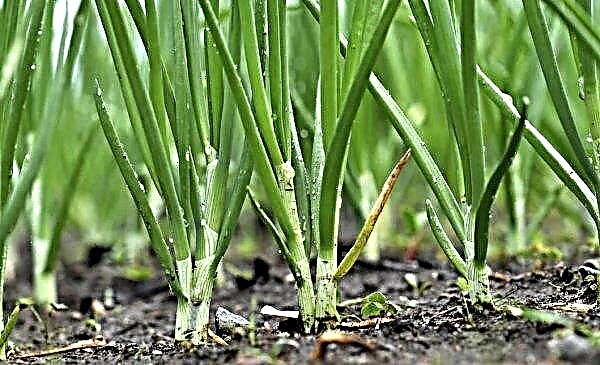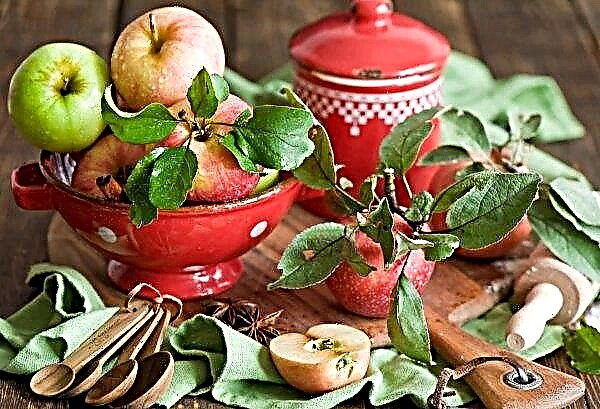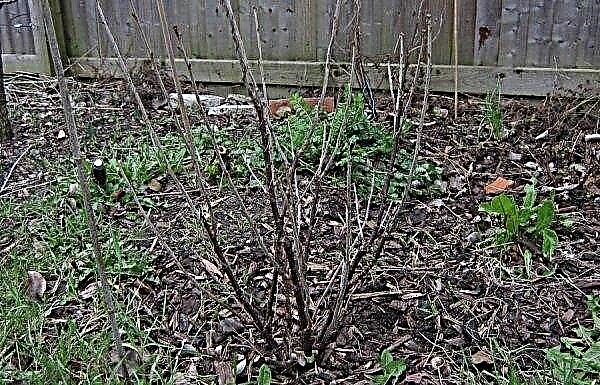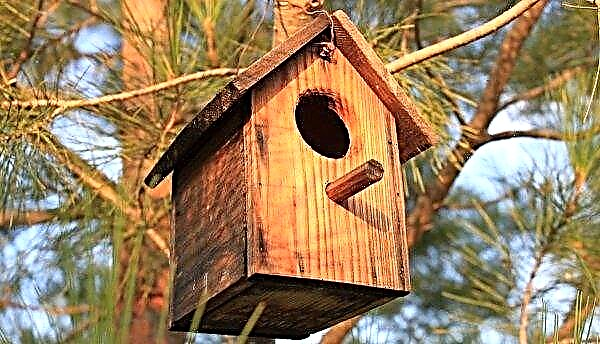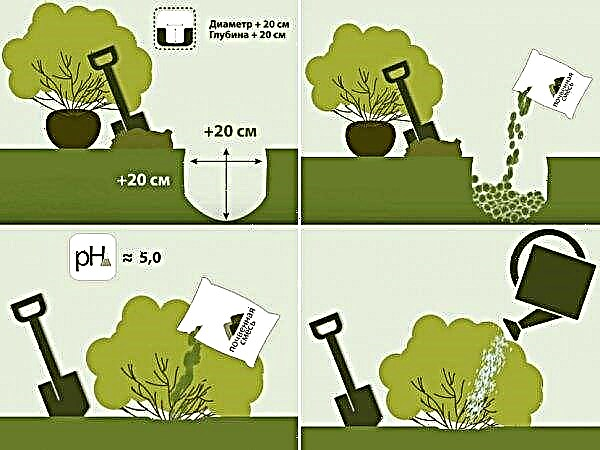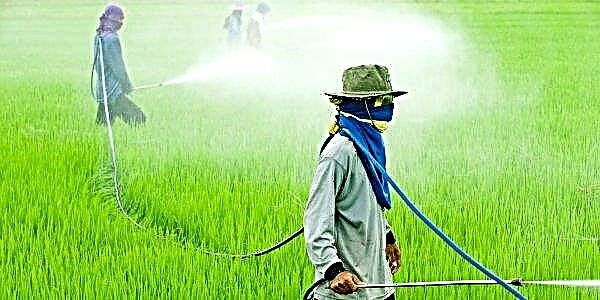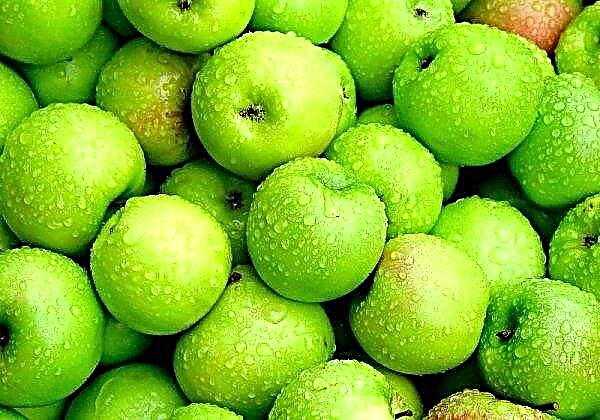Tomatoes A loving heart has unusual characteristics. Many gardeners who have seen and tried the fruits of this variety are thinking about planting it in their garden. About how to grow tomatoes Loving heart, later in the article.
Botanical grade description
Tomatoes A loving heart is the result of the work of Russian breeders from the Urals. Seeds are produced and sold by the Ural summer resident company.
Characteristics of the bush:
- indeterminate plant, bush height - 1.6–1.8 m;
- ripening time is average - 90–115 days;
- 5-6 brushes are formed on one bush;
- 5-7 fruits are tied on one hand.
Separately, it is worth describing the fruits.
They have impressive parameters:
- the average weight varies from 700 g to 1 kg;
- the form is heart-shaped;
- peel color - red;
- the peel is thin;
- fleshy flesh;
- characteristic aroma is present;
- the taste is sweet and sour.

From 17.5 to 25 kg of huge fruits ripen on the bushes of the red Loving heart. These are very large yields.
Advantages and disadvantages
A loving heart has its pros and cons.
- Among the advantages of the variety:
- extremely large quantities of crops;
- large weight and size of the fruit;
- balanced taste;
- medium disease resistance;
- resistance to weather changes;
- unpretentiousness in leaving.
Did you know? 95% of the tomato is water. Because of this, the vegetable has a low calorie content - only 20 kcal per 100 g.
- A loving heart has its drawbacks:
- tomatoes are not stored for a long time;
- the crop is practically not transportable;
- if the summer is short, tomatoes do not always have time to ripen;
- the fruits on the upper hands are smaller than on the lower.
Self-growing seedlings at home
Tomatoes of the variety Loving Heart are cultivated by the seedling method. Growing seedlings is an important stage on which subsequent productivity depends.
Sowing dates
Seeds for seedlings are sown from February 20 to March 15.
The soil
Unprofessional gardeners buy ready-made substrate for seedlings. You can prepare the soil yourself.
To get a soil bucket mix:
- 7 kg of turf land;
- 3.5 kg of humus;
- 3.5 kg of sand;
- 250 g of ash.

Next, the soil is disinfected using one of the following methods:
- calcined in the oven;
- treated with boiling water;
- freeze at minus temperature.
Thus, the farmer receives high-quality disinfected soil for seedlings.
Capacity for growing
Seeds are first sown in common boxes. Then the seedlings dive. For a dive, prepare separate cups for each seedling.
You can also read about other indeterminate varieties of tomatoes:
Seed preparation
Seeds must be prepared before sowing. Processing is carried out in 4 stages:
- Germination test. Soak the seeds in room temperature water. Pop-up grains will not grow, so they can be thrown away.
- Soaking in potassium permanganate. Pour seeds with 1% potassium permanganate solution for 30 minutes. Such treatment will disinfect the material.
- Growth stimulation. Additionally, seed can be treated in a growth promoter. Follow the instructions for the selected drug.
- Germination. Wrap the seeds in wet gauze. At room temperature after 3 days, the seeds will sprout. So the shoots appear 5 days earlier than without germination.
Sowing seeds
The soil is cultivated, the boxes are picked up, the seeds are sprouted - now you can sow seedlings.
Follow the instructions below:
- Fill containers with soil.
- Arrange the seeds in a row at a distance of 2 cm from each other.
- Deepen the grains by 1.5 cm.
- Sprinkle the material with a substrate.
Did you know? The largest tomato was grown in 2014 by farmer Dan McCoy from Minnesota, USA. The weight of the fetus was 3.8 kg.
Seedling Care
The nuances of care depend on the stages of seedling growth:
- After planting, spray the substrate with warm water. Cover the box with foil. Place the crops in a dark place with a temperature of + 25 ° C. Remove the film from time to time and spray the soil from the spray bottle.
- When the sprouts appear, remove the film. Move crops closer to the light source. The light should be bright, but diffused. The temperature can be lowered to + 22 ° C.
- On the stem, 2-3 true leaves - it means that seedlings need to be dive in separate cups. After the pick, continue to water the substrate. 1.5 weeks after the procedure, apply a complex mineral dressing. Continue to fertilize the seedlings every 2 weeks.
- 2 weeks before planting in a permanent place, begin to temper the seedlings. On the first day of hardening, take the tomatoes outside for 1 hour. Every day, extend the term by another 1 hour. By the time of transplantation, the seedlings should be on the street for 12-14 hours.
Planting seedlings in a permanent place
After 60–65 days, seedlings are transplanted onto the street. Timing depends on the type of cultivation. Seedlings are transferred to the greenhouse in May. A transplant to the garden is best done closer to June.

Step-by-step instructions for planting seedlings:
- Mark ridges 0.5 m apart.
- Dig holes in each bed, keeping a distance of 0.3 m between them.
- Moisten the seedlings in cups.
- Take out the seedlings and transfer to the holes without removing the earthen lump.
- Sprinkle the pits with soil.
- After transplanting, water the beds.
Useful care tips
The rich harvest of a Loving heart cannot be obtained without proper care. The variety is unpretentious, but you need to grow bushes correctly.
Watering
Water the beds every 3-4 days. The recommended irrigation method is bush irrigation. Water should not be colder than + 23 ° C.
Important! Bushes are watered in the evening, strictly after sunset. In the afternoon, the plant can get burns.
Top dressing
After planting seedlings continue to feed the bushes. A loving heart responds well to complex nutrition. Before flowering, bet on nitrogen products. After flowering, eliminate nitrogen and replenish potassium and phosphorus. There will be a lot of crop if you fertilize the bushes every 2 weeks.
Stepson
Form a bush in 1-2 trunks. The best result is obtained by farmers who grow a loving heart in 1 stalk. To prevent plantations from growing, remove stepchildren as they appear. So the plant will spend energy on the fruits, and not on unnecessary shoots.

Soil care
Tomato bushes are affected by soil conditions.
Do not forget to take care of the earth by following these steps:
- mulching with natural hay, leaves or conifers after planting;
- weeding as weeds grow;
- loosening every time after watering or rain;
- double hilling - 10 days after planting and 2 weeks after the first hilling.
Bush tying
The fruits of a Loving heart are large, but there are many on the branches. The bush may break due to the weight and quantity of tomatoes. Tie plants to prevent this. It is easiest to drive a peg 2.2–2.5 m high near each bush. As the fruits grow and develop, tie the shoots to the peg.

If there is a lot of plantings, farmers resort to trellis garters. In this case, pegs of the same height are driven in at the beginning and end of the bed. A wire is pulled over them - it is important that it is at different heights. When the bush grows to the level of the wire, tie the stem to it.
Preventative treatment
The variety is relatively resistant to diseases and pests. For prevention, proper care is enough. To increase the chances of a healthy harvest, Ural farmers recommend additional seedling treatment.
During the period of active growth, double-treat the plantings with systemic fungicides - Bordeaux liquid or “Fundazole”. Preventive treatment prevents the appearance of fungus.
It is also recommended to spray with a solution of potassium permanganate. The drug is prepared at the rate of 0.1 g of potassium permanganate per 10 l of water. The solution is sprayed with tomato bushes 2-3 times during the growing season. Potassium permanganate simultaneously disinfects and nourishes plants.Important! Treat in calm weather. Be sure to use protective equipment - gloves and safety glasses.
Harvesting
Harvest ripens by early August. It must be collected gradually, as it ripens. By cooling to + 10 ° C, farmers try to collect all the fruits. Tomatoes A loving heart is used fresh for preservation and juices. The fruits are good in combination with other vegetables - sweet peppers, carrots, onions. Due to the thin skin, the tomatoes do not lie for a long time and do not tolerate transportation well. So that the vegetables do not disappear, it is better to use them in the first 2 weeks after harvesting.

Large fruits are the main advantage of the variety Loving Heart. Compared to a rich harvest, the flaws of these tomatoes seem insignificant. The variety is unpretentious, so even a novice farmer can cope with its cultivation.



